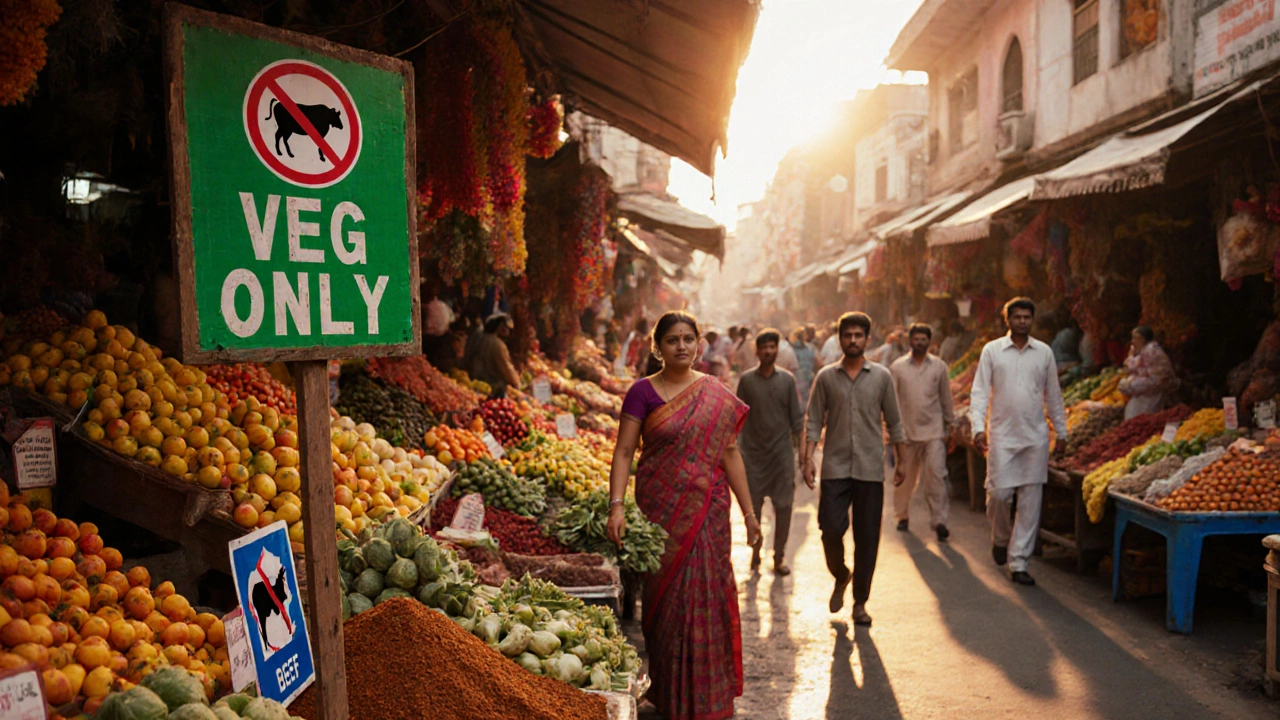
India’s Food Taboos: What Not to Eat Across Regions & Religions
Explore India's food taboos across religions and regions, learn what not to eat, and get practical tips for travelers to respect local customs.
When we talk about Indian food taboos, social and religious rules that dictate what people eat or avoid in India. These aren't just personal preferences—they're deeply tied to religion, caste, region, and generations of tradition. You won't find beef on the plate in many Hindu homes, and for good reason. Cows are sacred in Hinduism, not because of a rule written in stone, but because they’ve been seen as life-givers—providing milk, dung for fuel, and labor for farming. To kill one is unthinkable for millions. This isn’t a fringe belief; it’s woven into daily life across states like Uttar Pradesh, Rajasthan, and Tamil Nadu.
Then there’s the vegetarianism in India, the widespread practice of avoiding meat, especially among upper-caste and devout Hindu communities. plant-based eating isn’t just about health—it’s spiritual. Many believe eating meat creates negative karma, disrupts inner peace, and distances you from divine energy. Over 30% of Indians are vegetarian, the highest rate in the world. But it’s not universal. In coastal Kerala or Bengal, fish is common. In some tribal areas, pork and wild game are staples. The real divide isn’t between vegetarian and non-vegetarian—it’s between who gets to decide what’s clean, pure, or acceptable to eat.
And then comes the silent rule: caste. Even today, in many villages, Dalit families are forbidden from entering kitchens where upper-caste food is prepared. Some communities won’t accept food from someone of a different caste—no matter how clean the hands or how fresh the ingredients. This isn’t about hygiene. It’s about hierarchy. These taboos don’t show up on menus, but they shape who eats what, where, and with whom. In urban India, younger generations are breaking these rules, but the weight of tradition still lingers in homes, weddings, and temple langars.
What about onions and garlic? In some Jain and Brahmin households, these are banned—not because they’re unclean, but because they’re seen as stimulating, raising anger or desire. Even spices carry meaning. Turmeric is pure. Alcohol? Taboo for many Hindus, especially during festivals. And don’t even think about eating with your left hand—that’s considered unclean, a rule passed down from the days when it was used for hygiene after using the toilet.
These taboos aren’t random. They connect to Hindu dietary restrictions, a system of food rules rooted in Ayurveda, dharma, and regional customs. They’re not just about what you eat—they’re about who you are, where you come from, and how you show respect. You can’t understand Indian culture without understanding its food rules. They’re not outdated relics. They’re alive—in kitchens, at temple feasts, in arguments between grandparents and grandchildren.
What you’ll find in the articles below aren’t just lists of forbidden foods. They’re stories of identity, resistance, and change. From why some Tamils avoid meat during Karthigai Deepam to how Muslim communities in India handle pork differently than Hindus, these posts show how food taboos shape lives—not just meals. You’ll see how these rules vary by region, class, and generation. And you’ll understand why, even in a globalized world, some plates stay untouched for reasons deeper than taste.

Explore India's food taboos across religions and regions, learn what not to eat, and get practical tips for travelers to respect local customs.